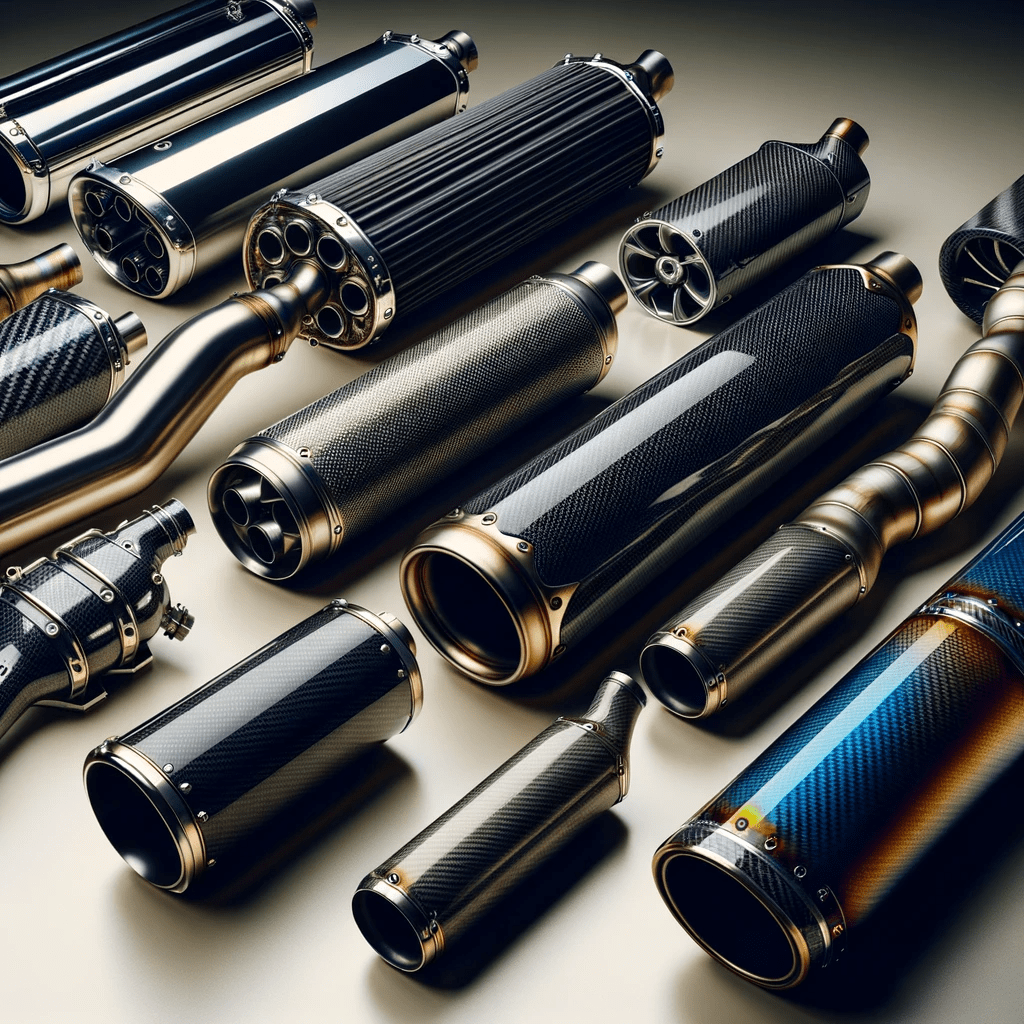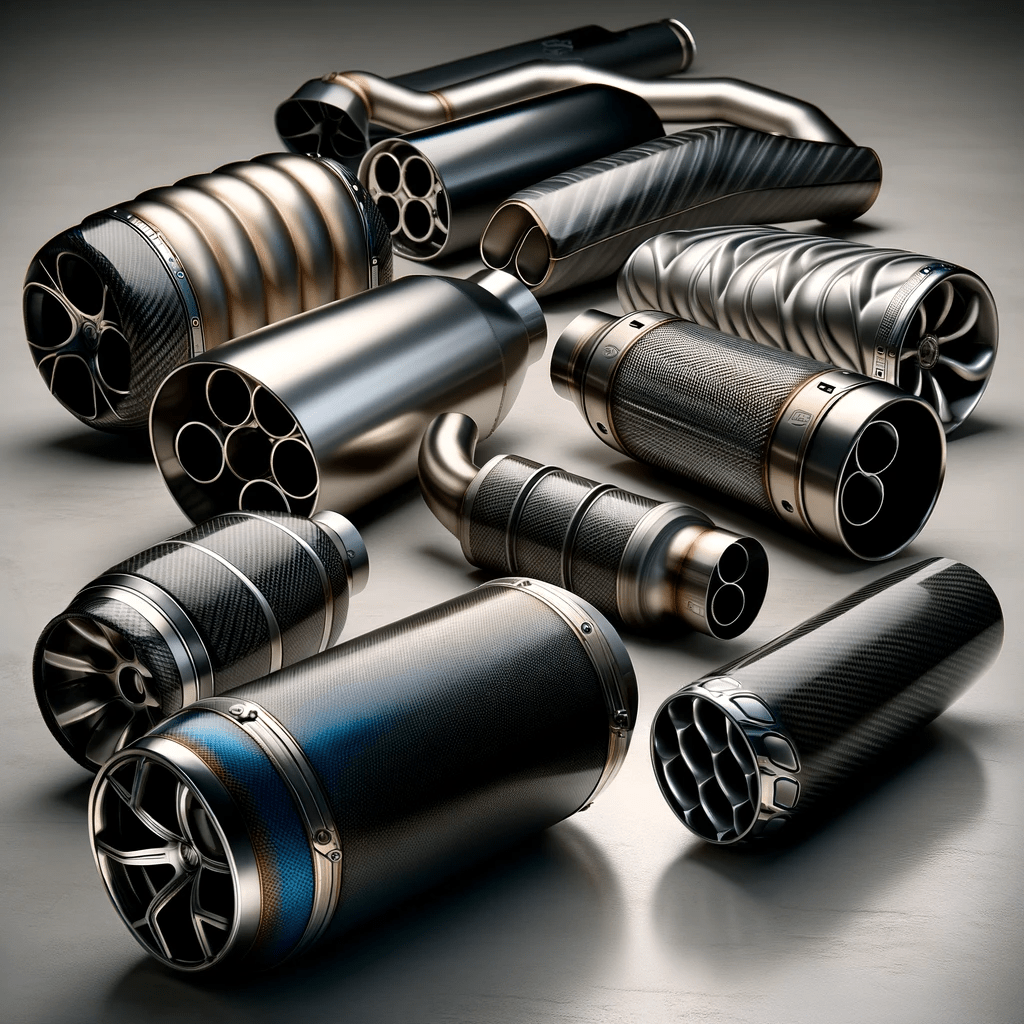Key Takeaways
| Material | Durability | Performance Impact | Aesthetic Appeal |
|---|---|---|---|
| Stainless Steel | High durability, rust-resistant | Excellent heat resistance, can improve flow | Shiny, sleek appearance |
| Aluminized Steel | Good durability, cost-effective | Decent performance, slightly heavier | Less shiny than stainless steel |
| Titanium | Extremely durable, lightweight | Best for performance, reduces weight | Unique, high-tech appearance |
| Cast Iron | Very durable, heavy | Common in older or stock systems | Traditional, less modern look |
| Carbon Fiber | Good durability, lightweight | Used more for aesthetic components | Modern, sporty appearance |
Overview of Exhaust System Materials

The material of an exhaust system is a crucial factor that affects its durability, performance, and look. Here’s a deeper dive into each type:
1. Stainless Steel
- Durability: Highly resistant to rust and corrosion.
- Performance: Offers excellent heat resistance, which can enhance exhaust flow and potentially improve performance.
- Aesthetics: Known for its shiny, sleek appearance, adding a touch of class to the vehicle’s underside.
2. Aluminized Steel
- Durability: Good resistance to corrosion, though not as long-lasting as stainless steel.
- Performance: Slightly heavier than stainless steel but still offers decent performance characteristics.
- Aesthetics: Less lustrous than stainless steel but still maintains a clean, finished look.
3. Titanium
- Durability: Extremely strong yet lighter than traditional materials.
- Performance: Often used in high-performance and racing vehicles due to its weight reduction benefits.
- Aesthetics: Offers a unique, high-tech appearance that appeals to performance enthusiasts.
4. Cast Iron
- Durability: Very robust, but prone to rust over time.
- Performance: Common in older vehicles or stock systems. Heavier, which can impact performance negatively.
- Aesthetics: Has a more traditional, less modern appearance.
5. Carbon Fiber
- Durability: Good strength-to-weight ratio. Resistant to corrosion.
- Performance: Often used for aesthetic components rather than the main exhaust structure.
- Aesthetics: Modern, sporty appearance, often used in high-performance or luxury vehicles.
Choosing the Right Material

When selecting an exhaust system, consider:
- Vehicle Use: High-performance vehicles might benefit from lighter materials like titanium or carbon fiber.
- Budget: Stainless steel offers a balance of cost, durability, and performance.
- Climate: In areas with harsh weather, rust-resistant materials like stainless steel are preferable.
- Aesthetic Preferences: For those who value appearance, materials like polished stainless steel or carbon fiber can add visual appeal.
Exhaust System Materials: A Comparative Analysis
| Material | Durability | Performance | Aesthetic Appeal | Best Use | More information |
|---|---|---|---|---|---|
| Stainless Steel | Very High | Excellent heat resistance, improves flow | Sleek, shiny look | All-purpose, especially in harsh climates | Exhaust System Upgrades |
| Aluminized Steel | Good | Decent performance, heavier than stainless | Less lustrous, clean finish | Budget-friendly options | Basics of Exhaust Mods to Enhance Performance |
| Titanium | Extremely High | Lightweight, great for performance | Unique, high-tech appearance | High-performance and racing vehicles | Turbocharging vs. Supercharging |
| Cast Iron | High | Heavy, common in older systems | Traditional, rugged look | Older or stock vehicles | Diesel Engine Optimization |
| Carbon Fiber | Moderate | Mostly aesthetic, lightweight | Modern, sporty appearance | Aesthetic enhancements in performance cars | Performance Mufflers |
Conclusion: Material Matters
The material of your exhaust system plays a significant role in not only how it performs and lasts but also how it looks. It’s important to weigh these factors against your personal needs and the specific requirements of your vehicle.